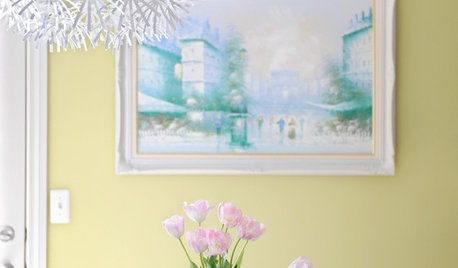overwintering koi under thick ice
jennyb5149
13 years ago
Related Stories

GARDENING AND LANDSCAPINGHow to Make a Pond
You can make an outdoor fish paradise of your own, for less than you might think. But you'll need this expert design wisdom
Full Story
LANDSCAPE DESIGNNatural Swimming Pools: More Beauty, No Chemicals
Keep your skin and the environment healthy with a pool that cleans itself, naturally
Full Story
FALL GARDENING7 Reasons Not to Clean Up Your Fall Garden
Before you pluck and rake, consider wildlife, the health of your plants and your own right to relax
Full Story
MOST POPULARHouzz Call: Show Us Your Winter View!
Share pictures of your home and garden in winter — whatever your climate, architecture and plantings
Full Story
LANDSCAPE DESIGNGet Along With Less Lawn — Ideas to Save Water and Effort
Ditch the mower and lower your water bill while creating a feast for the eyes with diverse plantings and gathering places
Full Story
HOUSEKEEPINGTo-Dos: Your March Home Checklist
It’s time to rid yourself of winter’s heaviness and set up for spring
Full Story
HOUSEPLANTSHow to Grow Orchids Indoors
Orchids are the exotic aristocrats of the flower world and can make themselves comfortable in almost any home
Full Story
WINTER GARDENING6 Reasons I’m Not Looking Forward to Spring
Not kicking up your heels anticipating rushes of spring color and garden catalogs? You’re not alone
Full Story
EDIBLE GARDENS12 Essential Herbs for Your Edible Garden
Make home cooking and drinks even better with herbs plucked from your own backyard or windowsill pot
Full Story
PETSPet-Proofing Your Home: A Room-by-Room Guide
Not all pet dangers are obvious. Keep furry friends safe and sound by handling all of these potential hazards
Full StoryMore Discussions



loriques
loriques
Related Professionals
Garden City Landscape Architects & Landscape Designers · New Mexico Landscape Architects & Landscape Designers · Saint Charles Landscape Architects & Landscape Designers · Edmond Landscape Contractors · Aloha Landscape Contractors · Estelle Landscape Contractors · Fort Wayne Landscape Contractors · Mercedes Landscape Contractors · Milford Landscape Contractors · Mission Bend Landscape Contractors · New Baltimore Landscape Contractors · Point Pleasant Landscape Contractors · Saint Paul Landscape Contractors · Tigard Landscape Contractors · Westford Landscape Contractorshorton
jalal
jennyb5149Original Author
jennyb5149Original Author
drh1
jennyb5149Original Author
marn_eh
mollywinnie
drh1
jennyb5149Original Author
drh1
annedickinson
jennyb5149Original Author
jennyb5149Original Author
davidtree